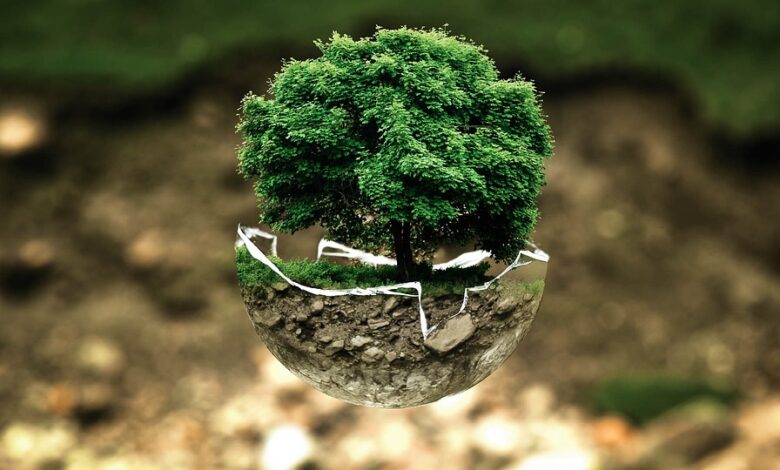The Environmental Benefits of Growing Hemp: An Eco-Friendly Option

Hemp, also known as industrial hemp, is a versatile and hardy crop with a wide range of uses. From textiles and paper to food and biofuels, hemp has been utilized for centuries for its many practical applications. In recent years, there has been a renewed interest in hemp due to its environmental benefits and potential to mitigate climate change.
Hemp is considered an eco-friendly option due to its many environmental benefits. From its ability to sequester carbon dioxide to its low water and pesticide requirements, hemp is a sustainable alternative to many traditional crops. In this article, we will explore the environmental benefits of growing hemp and its potential to contribute to a more sustainable future.
1. Carbon Sequestration
One of the most significant environmental benefits of growing hemp is its ability to sequester carbon. Hemp plants absorb carbon dioxide from the atmosphere as they grow, and this carbon is stored in the plant’s fibers and biomass. According to a study published in the journal Agriculture, Ecosystems & Environment, hemp can sequester up to 1.63 metric tons of carbon dioxide per acre of cultivation. This makes hemp an effective tool for reducing greenhouse gas emissions and mitigating climate change.
2. Soil Regeneration
Hemp is a resilient and fast-growing crop that can thrive in a wide range of soil conditions. It has deep roots that help to break up compacted soil and improve soil structure. Additionally, hemp plants have a high biomass, which means they can add organic matter to the soil and improve its fertility. This makes hemp an excellent option for regenerating degraded and depleted soils, and it can help to reduce the need for synthetic fertilizers and other soil amendments.
3. Water Conservation
Hemp is a low-water crop compared to many other traditional crops. It has been found to require significantly less water than cotton, for example, which is one of the most water-intensive crops to grow. This makes hemp a sustainable option for regions facing water scarcity and drought. In addition, hemp plants can help to reduce soil erosion and conserve water by providing ground cover and stabilizing the soil.
4. Pesticide Reduction
Hemp is naturally resistant to pests and diseases, which means it requires fewer pesticides and herbicides compared to many other crops. This not only reduces the environmental impact of agriculture but also minimizes the exposure of farm workers and wildlife to harmful chemicals. Furthermore, hemp is often grown in rotation with other crops, which can help to break pest cycles and reduce the need for chemical inputs in the long term.
5. Biodiversity
Hemp cultivation can support biodiversity by providing habitat and food for a wide range of beneficial insects, birds, and other wildlife. Its dense foliage and tall stature make it an attractive option for many pollinators, and its long flowering period can provide a valuable nectar source for honeybees and other pollinators. Additionally, hemp can be integrated into agroforestry systems and mixed-crop rotations, which can further enhance biodiversity and ecosystem resilience.
FAQs:
1. Is growing hemp legal?
Yes, growing hemp is legal in many countries, including the United States, Canada, the European Union, and Australia. However, regulations and licensing requirements may vary from region to region, so it is important to check the legal status of hemp cultivation in your area before starting a hemp farm.
2. Can hemp be used for food and medicine?
Yes, hemp seeds and oil are rich in essential nutrients and can be used for food and dietary supplements. Additionally, hemp has been used for centuries in traditional medicine for its potential health benefits, and there is growing interest in the therapeutic properties of hemp-derived compounds such as CBD.
3. How is hemp different from marijuana?
Hemp and marijuana are both varieties of the Cannabis sativa plant, but they have different chemical compositions. Hemp contains low levels of THC, the psychoactive compound in marijuana, and is primarily grown for its industrial and commercial uses. Marijuana, on the other hand, is cultivated for its high THC content and is used for recreational and medicinal purposes.
4. What are the environmental downsides of growing hemp?
While hemp has many environmental benefits, there are also potential downsides to consider. For example, large-scale monoculture production of hemp could lead to soil depletion and a loss of biodiversity. Additionally, the processing and transportation of hemp fibers and products could have environmental impacts if not managed sustainably.
In conclusion, growing hemp offers numerous environmental benefits and has the potential to play a significant role in creating a more sustainable and eco-friendly agricultural system. By sequestering carbon, improving soil health, conserving water, and reducing the need for pesticides, hemp can contribute to mitigating climate change and protecting the environment. With responsible management and careful consideration of potential downsides, hemp has the potential to be a valuable tool for building a greener and more sustainable future.
[ad_2]


